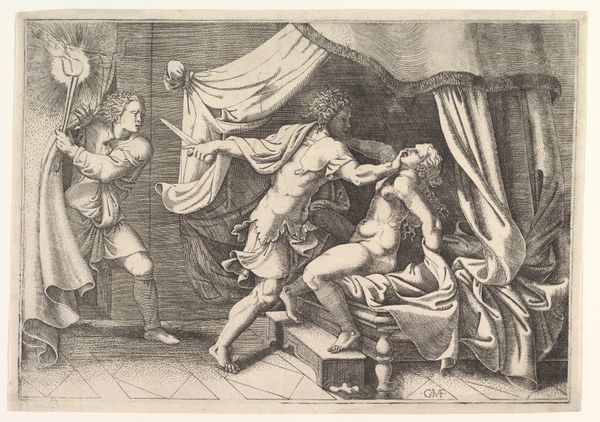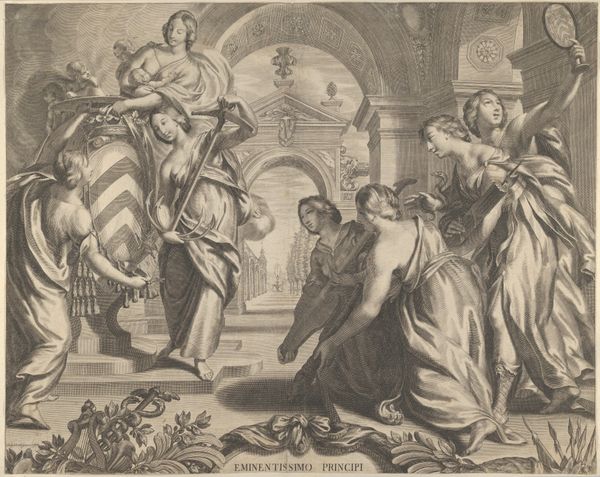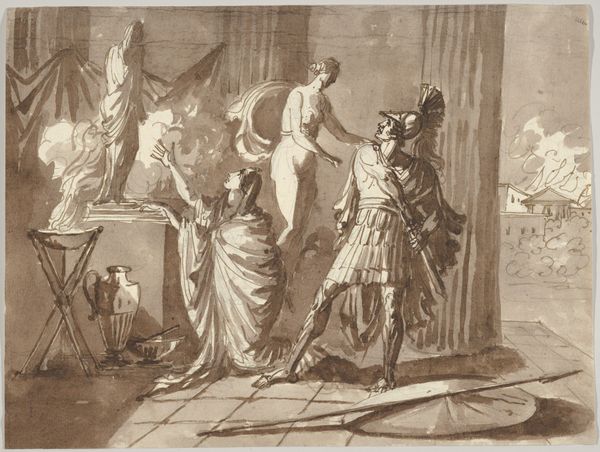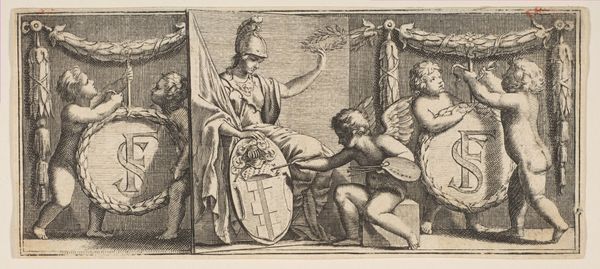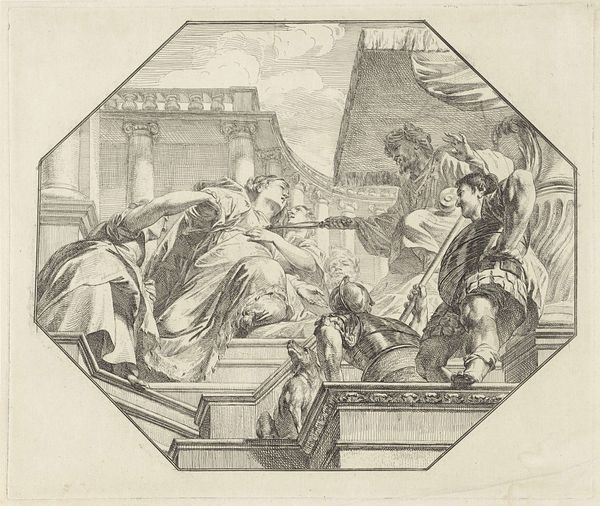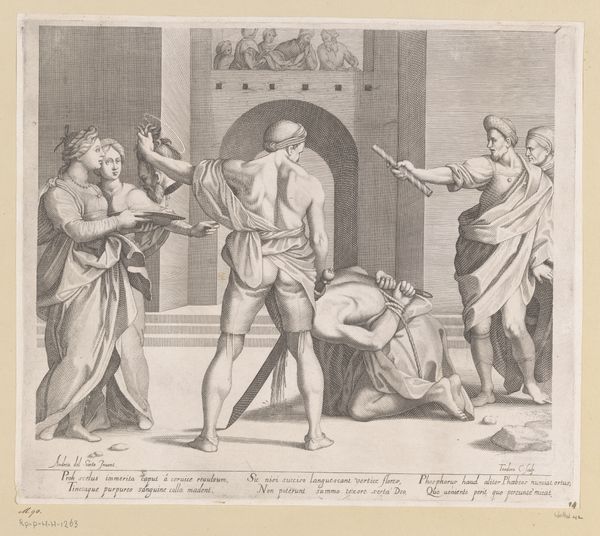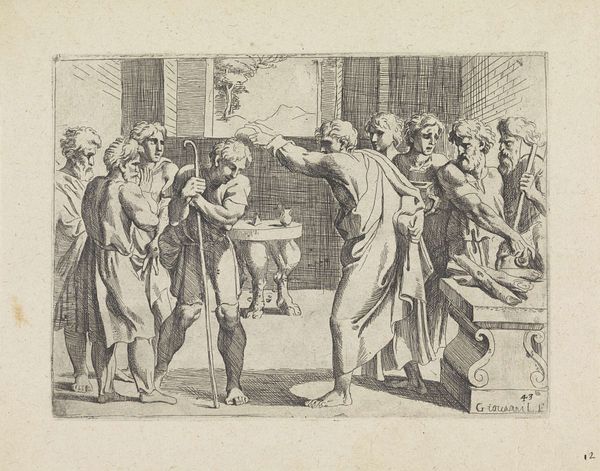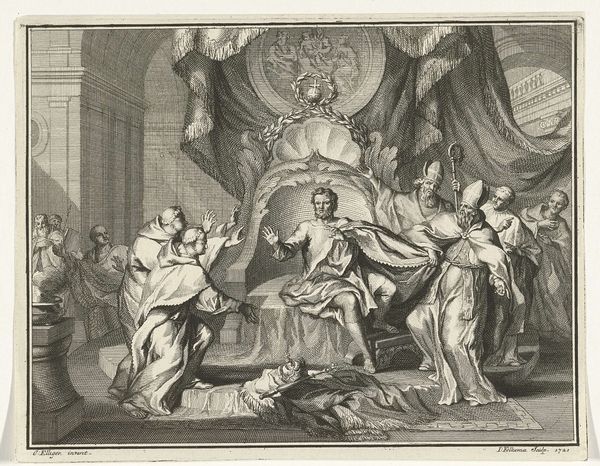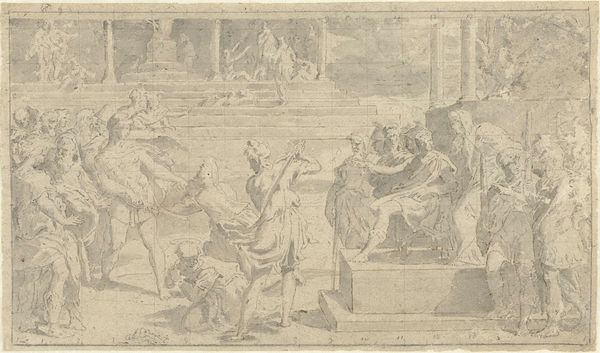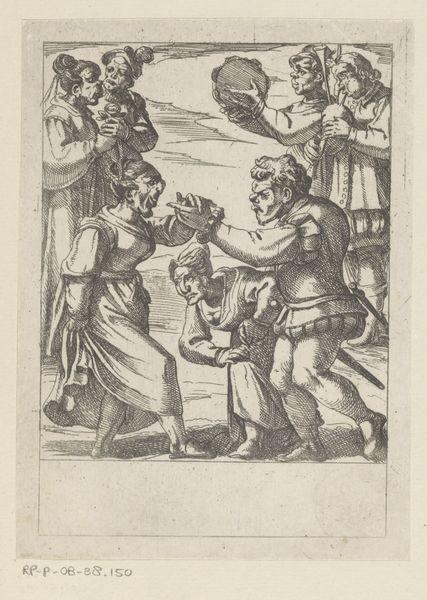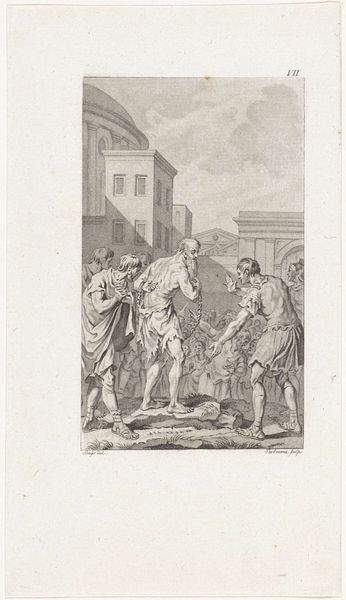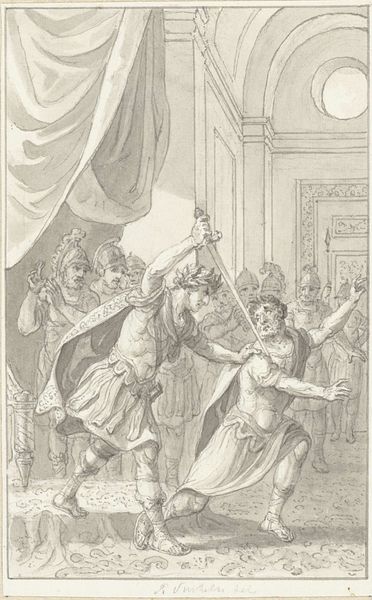
Perseus Confronting Phineas and his Followers with Head of Medusa c. 18th century
0:00
0:00
drawing, print, intaglio, paper, pencil, chalk, graphite
#
drawing
#
narrative-art
# print
#
intaglio
#
greek-and-roman-art
#
classical-realism
#
charcoal drawing
#
figuration
#
paper
#
pencil
#
chalk
#
graphite
#
history-painting
Dimensions: 117 × 202 mm
Copyright: Public Domain
Editor: This drawing, "Perseus Confronting Phineas and his Followers with the Head of Medusa," dates back to the 18th century and is currently housed at the Art Institute of Chicago. It seems to depict a chaotic scene, almost theatrical in its drama, like a captured moment on a stage. What draws your eye in this piece? Curator: Indeed, it's a potent scene. What strikes me is how the artist employs the Medusa head not just as a weapon, but as a symbol of ultimate, paralyzing truth. Think of Medusa's gaze as the confrontation with an undeniable reality. Doesn't the composition reinforce this idea, dividing those who are exposed to the truth and those who are trying to shield themselves from it? The horror is less about the monster itself, and more about the consequences of looking directly at what we fear most. Editor: That’s a compelling idea – Medusa as truth. I hadn’t considered that. I was focused on the action, the figures' poses. Does the artistic style, with its classical realism, also play a part in conveying that truth? Curator: Absolutely. The adoption of classical forms lends a certain weight and authority, connecting it to a long tradition of using myth to explore philosophical ideas. Furthermore, the monochromatic palette makes it an allegory. It emphasizes the stark choice presented to Phineas and his followers. The viewer also experiences the symbolic petrification. Do you feel it? Editor: I think so! I hadn't thought of the emotional and intellectual aspects. The artist encourages contemplation and moral decision-making by inviting us to witness and, in a sense, participate in this confrontation. Thank you. Curator: Precisely! And consider the power of symbols to echo through centuries; each viewing adds to the ongoing dialogue with these potent narratives.
Comments
No comments
Be the first to comment and join the conversation on the ultimate creative platform.
